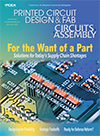Material Gains
 Can today’s sustainability drive turn on a solution from the past?
Can today’s sustainability drive turn on a solution from the past?
As global trading and economic power dominate the news, it's essential to consider the significance of the world’s electric vehicle markets in these developments. Western and Japanese car manufacturers are realizing that China has a huge lead in electric vehicle technology and a large, receptive domestic market that fuels the success of its local brands.
Brands that historically relied on strong exports to China may never recover the ground lost against these emerging domestic players, which offer cutting-edge products at lower prices. Chinese industry data calculate that battery EVs already represent about 25% of the country’s new car market and that China has been the world’s top producer in the new energy vehicles category for the past 10 years consecutively.
EV technology has rapidly advanced, with key targets focused on increasing driving range and reducing charging time. Range anxiety remains a significant barrier to widespread EV adoption and has resulted in vehicles equipped with large and heavy batteries. Their weight and bulk can compromise drivability and cause technical and environmental problems. Moving the vehicle demands a large quantity of energy, even though the powertrain may achieve extremely high energy-conversion efficiency.
Additionally, tire stress and wear increase, and producing the batteries demands large quantities of strategically important minerals like lithium. As the first wave of large-scale EV adoption reaches the end of life for many batteries, we will face urgent challenges with battery disposal and reclamation of valuable materials.
An abundance of hydrogen. If larger batteries are not a good long-term solution, hydrogen may offer an alternative power source. It’s much lighter in weight and has acceptable energy density. As the most common element in the universe, there is none of the scarcity challenges associated with lithium or fossil fuels. On the other hand, how clean hydrogen is depends on how it’s made. One method, electrolysis, splits water using electricity from renewable or nuclear sources – this is considered cleaner. Another method, called methane reforming, is more common today but produces a lot of CO2, which harms the environment. These production methods are the reason hydrogen is labeled by color: green and pink hydrogen come from cleaner sources, while gray hydrogen comes from reforming and is less environmentally friendly.
Perhaps electric road systems (ERS) could offer a solution. Leveraging inductive charging, ERS lets electric vehicles go further with smaller batteries. Researchers in Sweden have built short stretches of experimental roadways and run simulations that suggest a combination of home and dynamic charging could shrink car battery sizes up to 70%. Clearly, ERS will be expensive to install and maybe viable only in urban areas, although the Swedish team reckons the system could be viable if only 25% of the road network is converted.
There’s a cool piece of lateral thinking at the heart of this idea. Since the beginning of the automobile age, the vehicles we drive have carried their energy source. Semantically, it’s a defining principle, but ERS flips the concept on its head by taking the energy source off the vehicle. This enables lighter and more affordable EVs with extra range, something that traditional methods have struggled to achieve so far.
Historical precedents. Like many of the technologies currently being explored and developed to support a sustainable future, there are historical precedents. The San Francisco cable car system provides an example that dates from the 1870s. Cables running in trenches are driven continuously at 9.5 miles per hour, each powered by a DC electric motor, while the cars are simple and unpowered. An operator on board manually clamps the vehicle to the cable when it is time to move. Through the 20th century, people began to phase out the system until they acknowledged its cultural significance and preserved the remaining routes. The three surviving lines are still operating today, carrying passengers and sightseers to their destinations.
You may have noticed I’ve moved the goalposts, as the cable car system is an example of mass transit and not personal transport. Its simplicity is admirable, however, and this enabled the engineers to deliver a service of great value to the community using the limited capabilities of the time.
Similarly simple, functional and extremely environmentally friendly, are water-powered railways. Several are operating in different locations worldwide, including Braga in Portugal, Fribourg in Switzerland and the Lynton and Lynmouth Cliff Railways in the UK. Designed to carry passengers to the top of the steep coastal cliff, the Lynton and Lynmouth system comprises two carriages linked by a cable and consumes no power at all. Each carriage has a large tank filled at the top station using water from the nearby West Lyn River as ballast. The intricately engineered brakes are used to control the system as the heavy top car descends, which raises the lower car. At the end of the descent, the water is released and the other car is filled, permitting the process to repeat continuously.
Although the cliff railway has an extremely low carbon footprint, there would have been no such environmental imperative at the time it was built. A lack of funding is quite likely to have driven the unpowered design. Although ingenious, it was not widely copied. Today, under pressure to decarbonize, we should let ourselves be inspired by engineering like this as we seek to create solutions that are functional, affordable and fossil-fuel-free.
is technology ambassador at Ventec International Group (venteclaminates.com); alun.morgan@ventec-europe.com. His column runs monthly.
 AI chips could drive technical innovation in fields from PCB materials to district heating
AI chips could drive technical innovation in fields from PCB materials to district heating
The semiconductor business as we know it today represents a tremendous global success story, achieving consistent and strong growth year on year. Analysts expect it to exceed $1 trillion in sales by 2030, and some predict a further doubling over the following decade. The overall figures are extremely impressive, although some sectors are stronger than others. While automotive has enjoyed a strong run for many years as vehicles have electrified, recent performance fell below expectations.
 The automotive high-technology race is now as important to governments as it is to the industry itself.
The automotive high-technology race is now as important to governments as it is to the industry itself.
In September 2024, the Biden administration announced a ban on Chinese connected car technology, including hardware and software. This came on top of existing policies including a 100% tariff on Chinese electric vehicles and withdrawal of the government’s $7,500 EV-purchase subsidy for vehicles built with Chinese-made components. Apparently, after imposing the tariff and purchase disincentive, the government decided more measures were needed to protect the American auto industry adequately, including extending the protection to include software. Hence the ban on connected car tech.
 The infusion of AI into IoT infrastructures shows it’s vital to take cybersecurity seriously.
The infusion of AI into IoT infrastructures shows it’s vital to take cybersecurity seriously.
Although like many of us in this industry, I am fascinated by technology and curious to explore its possibilities, I am no hacker, well-intentioned or otherwise. Yet I do own a couple of gadgets, of course, available through reputable channels, that can sniff for open Internet ports and probe access-control systems, like hotel room keys. It’s got me thinking about the power of tools available to serious-minded hackers who devote their careers and considerable brain power to finding and attacking vulnerable targets online.
In the real, above-board world, we are placing increasing trust in the software applications that enable our lives, infrastructures, jobs and economies. And with the infusion of AI into all these applications, we know less and less about the mechanisms controlling them, or the values directing those mechanisms.
Keeping bad actors out is extremely important, especially as an increasing variety of cyber-physical systems – IoT applications – assist our daily lives at home, on the roads and in factories. As consumers, we enjoy legal protection against many types of cybercrime. We may not know when a connected device like an IP camera has been taken over and used in a botnet. These threats are abstract and virtual.
 The demand for products that last is innovating design, processes and materials.
The demand for products that last is innovating design, processes and materials.
As the technology in our pockets, homes and offices becomes increasingly critical to our daily missions as individuals, we all value the reliability of these complex electronic devices. We depend on smartphones, communication networks, home office equipment, automobiles, contactless payment terminals and more to be ready for action every time we call on them. To meet our expectations, these systems must deliver high reliability.
Product manufacturers and brand owners understand the market value gained from establishing a reputation for reliability. They also understand that product reviews and social media channels give consumers immense power to make or break that reputation.
In general, the reliability of consumer-grade and industrial products has improved remarkably as the electronics industry has matured. This is due to a number of important factors. Component and interconnect technologies have improved enormously. Digital electronics offer much greater repeatability and robustness to changing operating conditions than ancient, predominantly analog circuits. And opening the enclosure of almost any consumer device typically reveals a tidy and minimalist assembly as integrated components internalize many interconnections and functions. On top of this, standardization of specialized functions such as RF transceivers as plug-and-play modules has made complex systems much easier to design and build using hardware that’s already proven in existing designs. Moreover, the vendors continually refine and improve these modules from one generation to the next.
 Will 2025 bring new solutions to familiar challenges?
Will 2025 bring new solutions to familiar challenges?
The desire to solve problems is ingrained in human nature. But we know that our solutions often create new problems. It’s a cycle that will likely never end.
So if you want to know what’s coming in 2025, the short answer is nothing we didn’t already know. Important trends will include, of course, more AI spreading from cloud to edge, as well as developments in commercial space exploration and sustainable technologies. Each of these presents exciting opportunities while also being the subject of dire warnings if things were to go wrong.
Elon Musk recently suggested that the chances of AI turning out badly are about 10-20%. That sounds alarmingly high. Without delving more deeply into his comment, a logical, if slightly facetious, response is that the chances of AI working in our favor must then be 80-90%. That sounds more encouraging. In practice, however, we must be prepared for good and bad outcomes. Legislation is beginning to arrive as technology acts proposed in the US and Europe put forward restrictions on the use of the AI, including prohibiting undesirable practices like deception, social scoring, biometric categorization and untargeted facial recognition.
Press Releases
- Altus Reports Growing Demand for Guidance on Convection Reflow Oven Specification
- Coherix Opens New Adhesive-Dispensing Vision Center in Europe
- Pan Pacific Strategic Electronics Symposium Program Finalized
- The Most Critical 2 Inches in SMT Manufacturing – When a Splice Fails, the Line Fails, Full Stop. Throughput and Yield Depend on One Overlooked Moment


